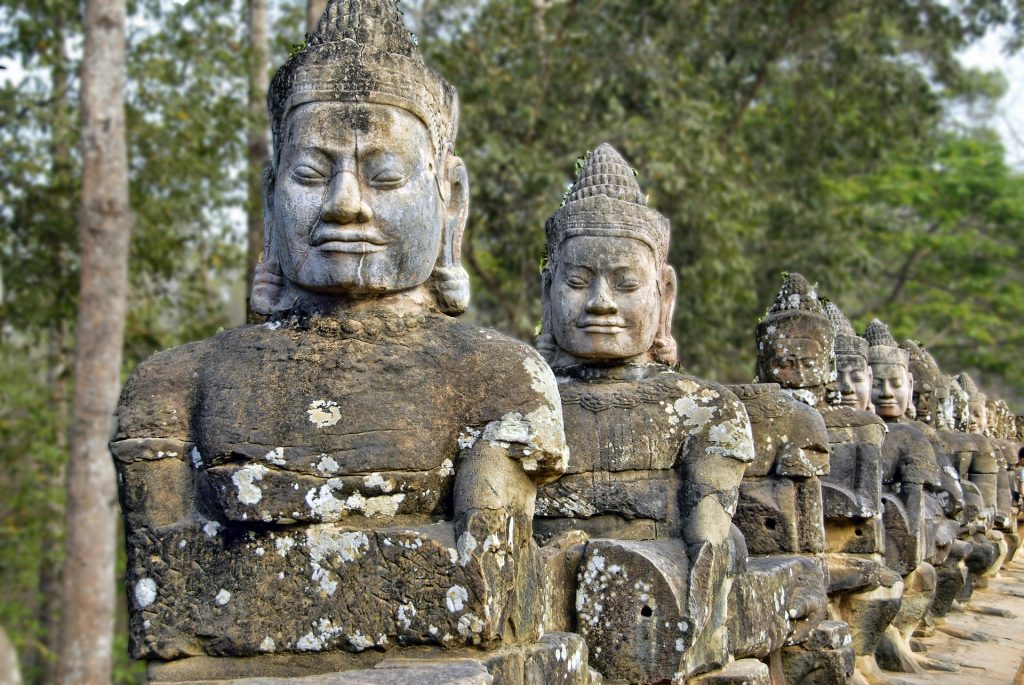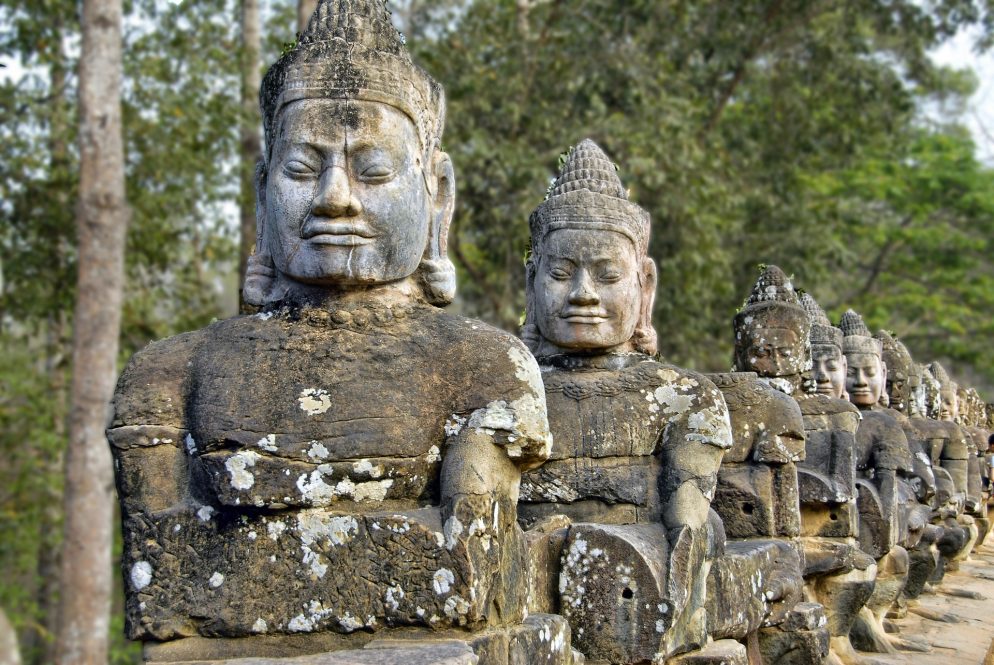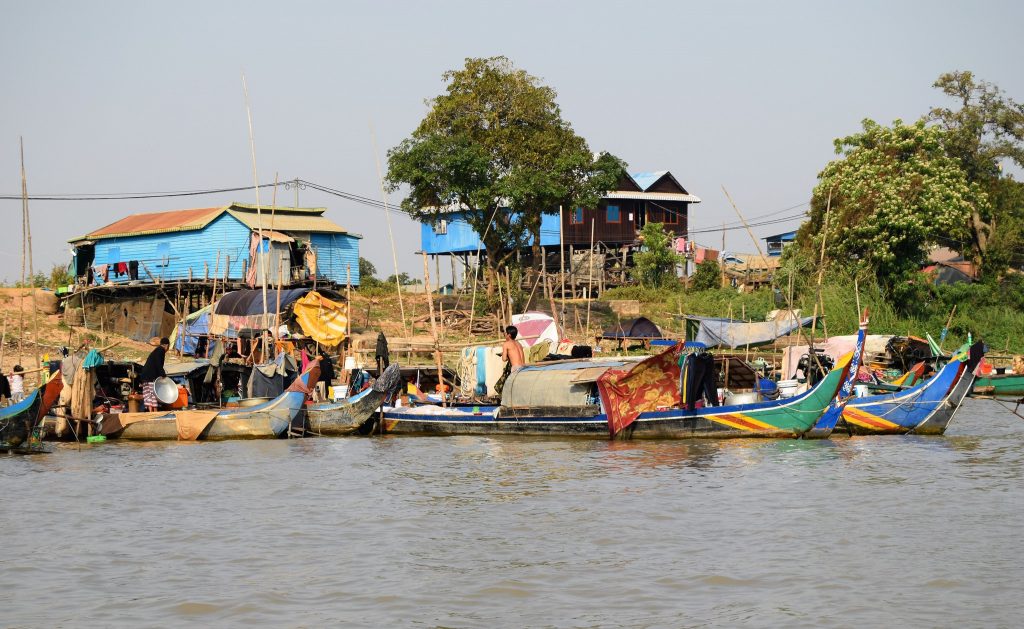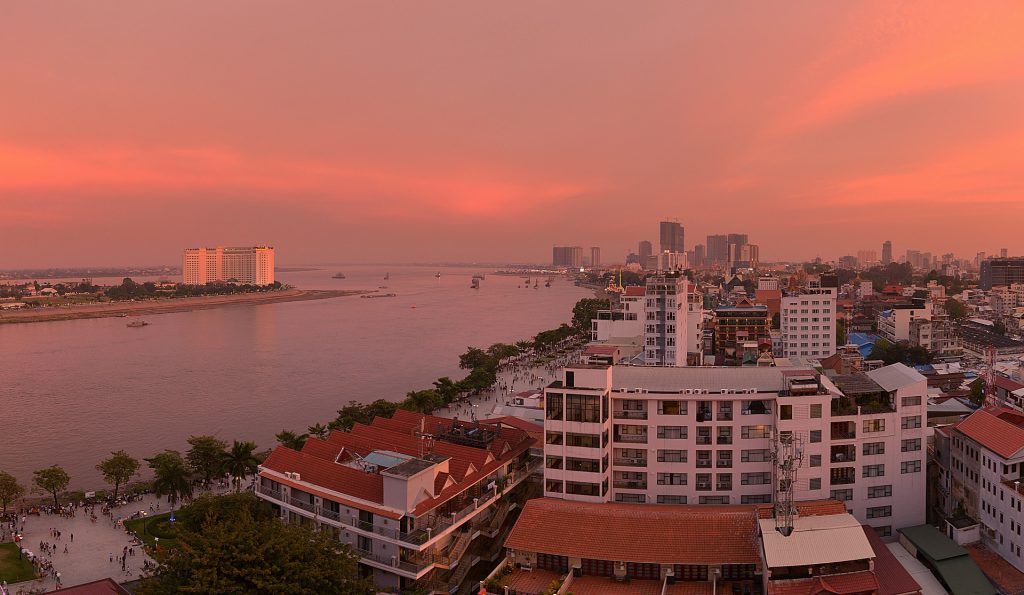GIVEN: 20 million refugees
GIVEN: individuals who return home are not the same people they were when they left
GIVEN: nearly every single family in Cambodia suffered losses during the time of the Khmer Rouge
PROVE: the journey never ends for the refugee
PROVE: survivors must learn to live with the absence of 2 million
PROVE: it is absence that propels the living to remember
“I will return to a country I have never known / that burns a hole inside my heart the size of home / when I arrive, / will I recognize Loss if she came to greet me at the airport / will she help me with my bags / usher me through customs / will she take me to my birth village / point me to the graves of ancestors / will she share silence with me / will she embrace me / will I ask these same questions / or will I be asked to prove my belonging…
…I often think about our leaving and all we left behind / imagined our lives without this exodus / dreamt of days when I could speak to Loss / to tell her we didn’t choose to leave / leaving chose us.” – Anida Yoeu Ali, “Visiting Loss,” 2005. 2
The Khmer Rouge reign of terror began at approximately 7:30 a.m. on April 17, 1975, when black-uniformed soldiers marched into the nation’s capital (Phnom Penh) during the Cambodian New Year.3 Emboldened by American foreign policy disasters and an unpopular Lon Nol dictatorship, the authoritarian regime found little resistance from Cambodians wary of illegal bombings, chaotic civil war, and ceaseless military violence.4 Grounded in untenable agricultural revolution, determined to eradicate Western influence by any means necessary, the Khmer Rouge systematically evacuated Cambodia’s cities and forcibly relocated residents to countryside labor camps. Single-minded in its “year zero” focus—which ironically hearkened back to analogous “year one” frames at work in France’s 1793-1805 “Revolutionary Calendar”—the Khmer Rouge renamed the former French colony “Democratic Kampuchea,” tortured countless numbers of Cambodian citizens, and executed thousands of alleged “enemies of the people.” 5
 Suggestive of inchoate place and subtractive time, the tabula rasa nature of “year zero” was most plain vis-à-vis “the wheel of history,” a state-produced metaphor configured along a paradoxical, ahistorical axis of “progress.” This de-historicized, state-authorized dictate was not limited to governmental slogans. The Khmer Rouge’s “wheel of history” fulfilled its promise, crushing virtually all facets of pre-revolutionary Cambodian society.6 The Khmer Rouge prohibited religion, outlawed education, disallowed currency, proscribed private property, and forbade the use of affective family names (e.g. for siblings, mothers, and fathers). As Ben Kiernan maintains, Democratic Kampuchea’s “slogan became kchat kchay os roling (‘scatter them to the last’).” Correspondingly, the Khmer Rouge “scattered libraries, burned books, closed schools, and murdered schoolteachers.”7 Within this compulsorily forgetful milieu, Cambodia’s National Library – the country’s chief cultural repository – was emptied and converted into a pigsty.8 In the months after Democratic Kampuchea’s dissolution, journalist John Pilger reported that the Khmer Rouge banned the word “sleep,” privileging instead less permanent allusions to “rest,” a lexical move congruous with an overriding emphasis on extreme labor.9
Suggestive of inchoate place and subtractive time, the tabula rasa nature of “year zero” was most plain vis-à-vis “the wheel of history,” a state-produced metaphor configured along a paradoxical, ahistorical axis of “progress.” This de-historicized, state-authorized dictate was not limited to governmental slogans. The Khmer Rouge’s “wheel of history” fulfilled its promise, crushing virtually all facets of pre-revolutionary Cambodian society.6 The Khmer Rouge prohibited religion, outlawed education, disallowed currency, proscribed private property, and forbade the use of affective family names (e.g. for siblings, mothers, and fathers). As Ben Kiernan maintains, Democratic Kampuchea’s “slogan became kchat kchay os roling (‘scatter them to the last’).” Correspondingly, the Khmer Rouge “scattered libraries, burned books, closed schools, and murdered schoolteachers.”7 Within this compulsorily forgetful milieu, Cambodia’s National Library – the country’s chief cultural repository – was emptied and converted into a pigsty.8 In the months after Democratic Kampuchea’s dissolution, journalist John Pilger reported that the Khmer Rouge banned the word “sleep,” privileging instead less permanent allusions to “rest,” a lexical move congruous with an overriding emphasis on extreme labor.9
Demanding that its citizens “give up all [their] personal belongings” and “renounce their father, their mother, all their family,” the Pol Pot-led Khmer Rouge (a.k.a. Angka, or “the organization”) dismantled by way of totalitarian repudiation the principal pillars of Cambodian society: centuries-old tradition, pre-revolutionary socioeconomic infrastructures, and Khmer familial affiliation.10 Democratic Kampuchea’s “wheel of history” had little need for those who could “not keep pace,” including the sick, the starving, the weak, and the elderly. Nor did Angka have use for teachers, lawyers, judges, civil servants, doctors, artists, returning Cambodian ex-patriots (who were fellow leftists), Cambodian Muslims (principally the Cham), Khmer Khrom (Cambodians living in South Vietnam), and ethnic Vietnamese Cambodians, who were specifically targeted, tortured, and executed. Between 1975 and 1979, over the course of three years, eight months, and twenty days, the Khmer Rouge was responsible for the deaths of an estimated 1.7 million Cambodians (21-25% of the extant population) due to execution, torture, starvation, overwork, and disease.





